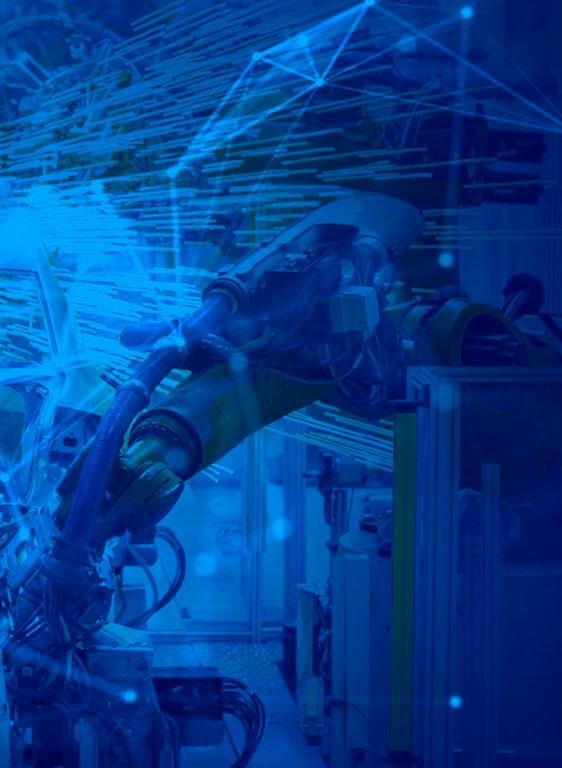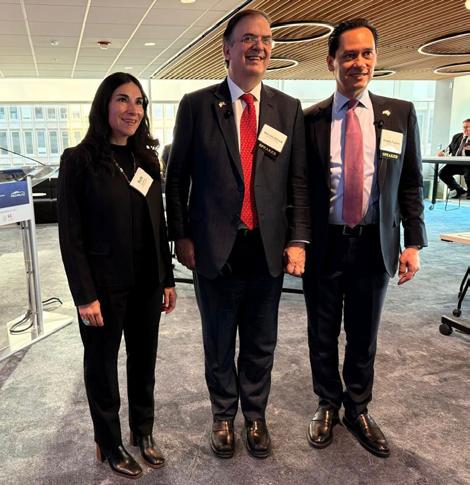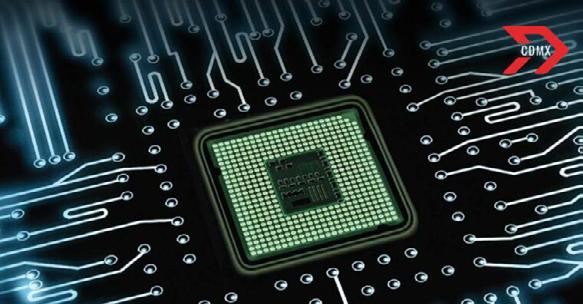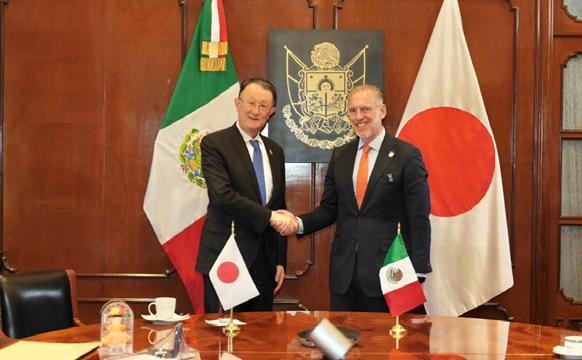GENERAL SITUATION IN MEXICO

Weekly Review I January 22, 2025



Weekly Review I January 22, 2025


President Donald Trump’s renewed policies, announced during his inauguration on Jan. 20, 2025, could significantly impact Mexico’s automotive and aerospace industries. In the automotive sector, Trump’s push to reshore manufacturing to the U.S., end electric vehicle (EV) mandates, and impose a 25% tariff on imports from Mexico could disrupt Mexico’s growing EV production and increase vehicle costs for U.S. consumers. These changes may force Mexican manufacturers to pivot back to combustion-engine vehicles, while
the Mexican government prepares for potential trade retaliations during the upcoming USMCA review. In aerospace, Trump’s focus on U.S. space exploration may indirectly benefit Mexico by boosting demand for aerospace components, though Mexico must compete in an innovation-driven market.
SOURCE: MEXICO BUSINESS NEWS
During a visit to Detroit, Secretary of Economy Marcelo Ebrard emphasized that the automotive sector accounts for 22% of total trade under the USMCA, highlighting its success in fostering prosperity across North America. Speaking at the Driving Shared Prosperity forum organized by the Detroit Regional Chamber, Ebrard underscored the importance of U.S.-Mexico collaboration to maintain competitiveness in the global market. The event brought together 50 executives from global mobility companies in Southeast Michigan, Windsor, and Mexico. Ebrard also met with Mexican engineers working in Michigan, praising their contributions to innovation and the local economy.
SOURCE: MEXICO NOW


The semiconductor industry is a priority for President Claudia Sheinbaum’s administration, aiming to double local chip manufacturing supply and attract $10 billion in investment by 2030, with northern Mexico playing a pivotal role. Key regions like Baja California, Jalisco, Chihuahua, Nuevo León, Sonora, Coahuila, and Tamaulipas host 326 facilities covering the semiconductor supply chain, supported by academia and research institutions. Companies like Foxconn, Qualcomm, and Lenovo operate in these areas, leveraging proximity to the U.S. for seamless collaboration. Programs with institutions like Arizona State University further enhance workforce development in this critical sector.
SOURCE: MEXICO NOW



The State Energy Commission and the Mexican Association for the Promotion of Electric Vehicles (AMIVE) have partnered to advance sustainable energy strategies and electric mobility in Baja California. Announced by Secretary of Economy and Innovation Kurt Honold Morales, the agreement supports Governor Marina del Pilar Ávila Olmeda’s push for zero-emission transportation and aligns with federal strategies for a sustainable economy. Key goals include promoting public policies, enhancing EV infrastructure, raising awareness, and attracting investments to expand charging networks. This initiative aims to position Baja California as a leader in clean energy and electromobility, fostering a sustainable future with AMIVE’s support.
SOURCE: MEXICO NOW

The first assembly plant for Mexico’s electric vehicle, Olinia, will be established in Sonora, marking a milestone for the country’s automotive industry. Announced by President Claudia Sheinbaum, this project positions Sonora as a key player in sustainable innovation and economic growth. The plant will leverage the region’s rich lithium reserves in Bacadehuachi, essential for EV battery production, strengthening Sonora’s role in the global electric vehicle market. Set to create jobs across the supply chain— from lithium processing to vehicle manufacturing and distribution—the initiative also aligns with renewable energy goals. Olinia’s three vehicle models, tailored for personal, urban, and last-mile delivery use, aim to be affordable, sustainable, and available by 2030, showcasing Sonora as a hub for clean mobility.
SOURCE: NORO



Chihuahua aims to attract $48.8 million in industrial investments by 2025, primarily in the aerospace, automotive, and manufacturing sectors, according to José Jesús Jordán, Director of Economic Development and Competitiveness. These investments include expansions and new facilities from at least five aerospace companies, creating specialized jobs and strengthening infrastructure. The initiative also focuses on workforce training and reducing urban mobility issues by developing industrial projects in southern Chihuahua, promoting balanced economic growth and improving residents’ quality of life.
SOURCE: MEXICO NOW


Querétaro and Japan strengthen ties for training and supplier development. Marco Antonio Del Prete Tercero, head of the Secretariat of Sustainable Development (SEDESU), met with Takero Aoyama, Japan’s Consul General in León, to discuss strategies for collaboration in areas such as talent training, supplier development, and business connections. From January to September 2024, Querétaro received $88.1 million in foreign direct investment (FDI) from Japan, making it the state’s seventh-largest trading partner. Between 2006 and Q3 2024, Japan invested $854.9 million, representing 4.7% of Querétaro’s total FDI and ranking as the fourth-largest investor in the region.
SOURCE: MEXICO INDUSTRY




The industrial real estate market in Mexico City and its metropolitan area reached a record high in 2024, with 1.5 million m² commercialized, driven by the logistics sector (53%), e-commerce (27%), and retail (7%). Gross demand included 90+ transactions, with built-to-suit projects comprising 42%. Direct foreign investment (44% of Mexico’s total) boosted the sector, while net demand grew 13% annually. Inventory rose 35% year-over-year, adding 876,357 m², yet vacancy rates hit historic lows (1.8%). Cuautitlán, Zumpango, and Tepotzotlán led activity, while rents averaged $9.01/m². Office spaces showed recovery with 178,000 m² absorbed and vacancy declining to 20.44%. With 523,207 m² under construction and upcoming projects like O’Donnell Last Mile Vallejo, the industrial sector is set to grow, focusing on last-mile logistics and large-scale spaces, especially in Iztapalapa and Zumpango-AIFA.
SOURCES: EL ECONOMISTA, MEXICO INDUSTRY

The updated trade agreement between Mexico and the European Union (EU), renewed on January 18, 2025, could significantly benefit the State of Mexico, according to Dante León Ortega, an economist at UAEM. While Mexico has a free trade agreement with the EU since 2000, the new focus under the “Plan México” seeks to strengthen ties, particularly with key EU trade partners: the UK, Netherlands, Germany, France, and Spain. The agreement not only facilitates goods exchange but could also boost foreign investment by enhancing Mexico’s global economic appeal. A proposed shift emphasizes transforming raw materials domestically before export, potentially increasing the value of Mexican goods and attracting more investment. The State of Mexico stands to gain due to its industrial infrastructure, extensive population, and ongoing mobility projects, such as metro expansions and connections to Mexico City, which enhance its investment attractiveness.
SOURCE: LA JORNADA

The company announced the expansion of its plant in the municipality of Guadalupe, Nuevo León, with an investment of 50 million dollars. This project created 150 direct jobs and 200 indirect jobs.
The Japanese company celebrated the inauguration of the expansion of its plant in Reynosa, Tamaulipas. This project includes an investment of 23 million dollars and the creation of 384 jobs in the region.
The Indian company inaugurated its first facility in Mexico, located in the San Jerónimo Industrial Park in Ciudad Juárez, Chihuahua. This project will generate over 1,200 jobs with an investment of 40 million dollars and plans an additional investment of over 20 million dollars in the next five years.
With an investment of 15 million dollars, HI-LEX Controls celebrated the inauguration of its new plant in the Salva Industrial Park Derramadero, located in Saltillo, Coahuila. This project will create 500 new jobs.
Bayer Mexico will be investing 53 million dollars in Lerman, State of Mexico through the “Project Spectre,” expanding pharmaceutical production and establish an Innovation Center.The project aims to create 50 jobs in addition to the 600 positions the company currently offers.
SOURCE: MEXICO INDUSTRY
• INITIATIVE TO AMEND AND SUPPLEMENT ARTICLES 86 AND 132 OF THE FEDERAL LABOR LAW ON SALARY TRANSPARENCY
Presented by: Sen. Olga Patricia Sosa Ruiz
Objective: Implementing, in agreement with workers, a protocol to reduce and eliminate the gender pay gap. Promoting necessary activities to address the gender pay gap. To this end, companies with 100 or more employees must publish biannual reports on salary transparency and remuneration criteria in workplaces, including anonymous salary data and information on the representation of various demographic groups in management and leadership positions.
Status: Published in the Parliamentary Gazette


• INITIATIVE WITH A BILL TO AMEND ARTICLE 376 TER OF THE FEDERAL PENAL CODE TO INCREASE PENALTIES FOR CARGO TRANSPORT THEFT IN ANY FORM
Presented by: Dip. Emilio Manzanilla Téllez
Objective: To increase penalties for the crime of theft targeting individuals who provide or use federal cargo transportation, passenger, tourism, or private transport services, whether directly or through a third party, when the stolen goods are merchandise. The amendment proposes a penalty range of 10 to 20 years in prison.
Status: Published in the Parliamentary Gazette
• INITIATIVE WITH A BILL TO AMEND SECTION IV OF ARTICLE 59 OF THE FEDERAL ECONOMIC COMPETITION LAW
Presented by: Dip. Bruno Blancas Mercado
Objective: To establish that, in determining whether one or more Economic Agents hold substantial power in the relevant market, or in resolving matters related to competition conditions, effective competition, the existence of substantial market power, or other issues concerning competition or free market entry, consideration must be given to the Economic Agents’ and their competitors’ access to sources of inputs. The measure aims to promote such access through standardized acquisition prices, preventing oligopolistic practices that may benefit or harm economic agents regardless of their size.
Status: Published in the Parliamentary Gazette


• INITIATIVE WITH A BILL TO AMEND THE THIRD PARAGRAPH OF ARTICLE 186 AND ADD CHAPTER II BIS “ON EMPLOYERS WHO HIRE YOUNG PEOPLE,” INCLUDING ARTICLE 186 BIS, OF THE INCOME TAX LAW
Presented by: Dip. Diego Ángel Rodríguez Barroso
Objective: To grant a fiscal incentive to employers hiring young individuals, allowing them to deduct 20% of the wages paid to employees aged 18 to 29 from their taxable income for income tax purposes in the corresponding fiscal year. The full wage used as the basis for income tax withholding, as outlined in Article 96 of this law, will be considered for this deduction.
Status: Published in the Parliamentary Gazette
OP-ED: THE EVOLUTION OF IMMEX IN MEXICO— A CRITICAL PATH FORWARD
By Marco Kuljacha
For over two decades, the IMMEX program has been a cornerstone of Mexico’s economic development, attracting foreign investment and creating millions of jobs. IMMEX supports industries such as automotive, aerospace, medical device, and electronics, generating millions of direct and indirect jobs.
Key IMMEX facts:
• Number of IMMEX Establishments: 6,530
• IMMEX Establishments with IVA/IEPS Certification: 3,346
• IMMEX Trade by IVA/IEPS Certified Companies: +90%
• Share of IMMEX Exports: 60%
• Direct IMMEX Employment: 3.27 million
• Indirect Employment Generated: +7.5 million
• IMMEX Employment as Total Formal Employment (IMSS): +15%
Note – September 2024, own elaboration from INEGI data
Key Companies: Honeywell, Caterpillar, Medline Industries, 3M, Continental, Johnson Controls, Bombardier, Latecoere Groupe, Meggit Aircraft, John Deere, Navistar, Feightliner, Eaton, Emerson, Thermofisher, GE, Lear, Bosch, Aptiv, Polaris, Sanmina, Foxconn, LEGO, Jabil, Carrier, Whirlpool, Frisa, Katcon, Metalsa, Magna, Bobcat, among hundreds more.
The program has driven Mexico’s goods trade surplus, contributing $50 billion in the first half of 2024 alone. But today, in the face of global nearshoring trends and advanced manufacturing demands, the IMMEX program must evolve.

Thirty years ago, IMMEX emerged as a key duty-reduction initiative. Today, it is viewed as a free trade zone that offers access to trade agreements, country of origin requirements, and PROSEC. Yet, it’s no longer as attractive in its current form. In a world where advanced industries like semiconductors, electric vehicles, and medical devices are reshaping global supply chains, Mexico needs to align its IMMEX program with the future, not the past.
To seize nearshoring opportunities, Mexico must relaunch IMMEX as IMMEX 4.0. This shift will transform Mexico from a basic assembly operation hub to a leader in advanced, high-tech manufacturing. The key to this transition lies in simplifying administrative processes, enhancing transparency, and providing support for high-value sectors like AI, digital transformation, and clean energy.
The benefits of VAT (IVA/IEPS) certification—the program’s biggest attraction—have become overshadowed by overly complicated compliance processes. Consolidating the IVA/IEPS and IMMEX registrations within the Secretary of Economy could cut the startup time for a new company in half. Furthermore, manufacturers generating significant VAT in favor struggle to recover funds, creating frustration rather than

fostering investment. The growth of nearshoring in Mexico is being hindered by administrative burdens, unclear compliance rules, and significant liabilities.
The IMMEX 4.0 framework proposes an administrative simplification plan. The goal? To reduce legal uncertainties, cut costs, and ensure business continuity— paving the way for Mexico to become a global player in advanced manufacturing.
Nearshoring has brought significant investment to Mexico. While two decades ago, investors were cautious, testing the waters with small-scale operations, today’s landscape looks vastly different. Large industrial campus developments, often exceeding 1 million square feet, have become the norm. This signals confidence in Mexico’s future as a manufacturing hub, even though certain tax and administrative challenges remain.
However, the IMMEX program’s focus must shift from just attracting investment to developing the skills necessary for advanced industries. The talent is here, but the skills lag behind. If we are serious about competing in high-tech sectors, we need robust training programs that equip our workforce to handle industries like semiconductors and electric vehicles. This is an urgent challenge that should have been addressed a decade ago, but it’s not too late to act now.
The word maquiladora has long been associated with Mexico’s industrial sector, but it often carries connotations of low-skill, labor-intensive assembly work. While many IMMEX companies have moved far beyond this, the perception lingers. It’s time for a fresh start— rebranding the IMMEX program to reflect the reality of modern, sophisticated manufacturing in Mexico.
In addition, the growth of the service IMMEX modality—supporting companies that provide R&D, technological services, and innovation—must be recognized. These services increase skills transfer and innovation, reinforcing Mexico’s role in the global value chain under the USMCA.
The IMMEX program has served Mexico well for decades, but it must evolve to stay relevant. With IMMEX 4.0, we have an opportunity to become a global hub for high-tech manufacturing, fostering innovation and competitiveness. The stakes are high, but with the right policies and focus, IMMEX can once again lead Mexico’s economic transformation.
Now is the time to act.

CONSIDERING MANUFACTURING IN MEXICO? HERE’S WHAT YOU NEED TO KNOW ABOUT SHELTER SERVICES
Expanding operations into Mexico offers exciting opportunities, but navigating the complexities of a new market can be daunting. That’s where shelter services come in. These turnkey solutions simplify market entry, handle administrative and regulatory burdens, and let manufacturers focus on what they do best: production.
From quick market entry to leveraging the IMMEX program for tax advantages, shelter services are transforming how companies in industries like automotive, electronics, aerospace, and medical devices operate in Mexico. Ready to learn how these services can boost efficiency, reduce risk, and fast-track your success in the Mexican market? Dive into our blog to explore the benefits, key models, and what to consider when selecting a provider.
North America’s transportation networks are at the forefront of a trade revolution, driven by nearshoring, reshoring, and friendshoring strategies. With $1.57 trillion in annual transborder freight and trucking dominating regional trade flows, the NAFTA Superhighway and other key corridors are becoming the backbone of economic integration across Canada, the U.S., and Mexico. As nearshoring fuels demand in critical industries like automotive, electronics, and energy, the region’s transport infrastructure faces both opportunities and challenges. How are these corridors evolving to meet future demands, and what role will they play in reshaping North America’s supply chains? Dive into our latest blog to explore the impact of nearshoring on regional connectivity, the role of key trade hubs, and the transformative potential of collaborative infrastructure development.